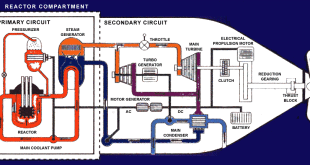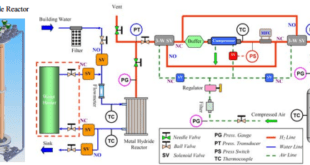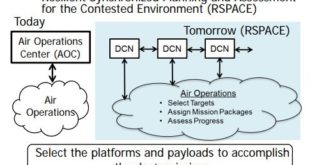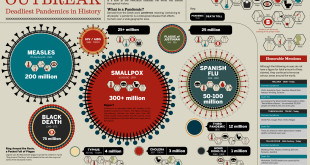Supercomputers have become essential for National Security, for decoding encrypted messages, simulating complex ballistics models, nuclear weapon detonations and other WMD, developing new kinds of stealth technology, and cyber defence/ attack simulation. Because of the expense, supercomputers are typically used for the most intensive calculations, like predicting climate change, or …
Read More »Air Force testing tactical data links gateway for communications between F-22 and F-35 aircraft enabling Network centric systems
NCW is theory of warfare in the information age which hypothesizes that forces which are networked will outperform forces that are not. NCW is an ‘integration of sensors, decision-makers, weapons platforms and support capabilities to enable agility’ providing ‘interoperability and collaboration within and between services’. According to U.S. Defense …
Read More »NATO refocussing on development of Electronic Warfare to match sophiticated capabilites of its adversaries
For NATO forces, the Electromagnetic spectrum (EMS) is an essential part of military operations, so much so that many Allied leaders now see the EME as an operational environment and a part of the battlespace where friendly forces manoeuvre in time, location, and spectrum to create electromagnetic effects in support …
Read More »US, Russia, and China are developing next generation nuclear submarine fleets, other countries are also mastering nuclear submarine technology
A nuclear submarine is a submarine powered by a nuclear reactor. The performance advantages of nuclear submarines over “conventional” (typically diesel-electric) submarines are considerable. Nuclear submarines are more powerful than diesel-powered submarines because nuclear reactors powering them can run for years without the need for refuelling. Nuclear propulsion, being completely …
Read More »Phase Change Materials (PCMs) and Metal Hydride Heat Storage Technology for Directed Energy Weapon Systems
Recent advances of high power solid state lasers promises necessary laser power levels required for the Directed Energy Weapons (DEW) systems. However, inefficiencies of the laser components still generate too much waste heat to be managed by conventional liquid cooling systems, especially in an airborne platform where compactness, light-weight and …
Read More »DARPA RSPACE Autonomous and Resilient command and control for Air Mission Planning under contested environment
Air Force officers in charge of creating air tasking orders have long developed mission plans at air operations centers, known as AOCs, or centralized hubs in a specific command. In future conflicts U.S. forces may face degradation or denial of critical communications capabilities essential for coordination and shared situation understanding. …
Read More »Predicting, eliminating and mitigating the impact of increasing disease outbreaks due to pandemics such as dengue and zika are national security priorities
From Ebola outbreak in West Africa to the most recently, the rapid spread of Zika has shown that even with all advances in modern medicine we are still not completely safe from pandemics. These epidemic of infectious diseases can spread quickly through human populations across a large region several continents, …
Read More »Memcomputing to accelerate deep learning and Space-based Intelligence, Surveillance, and Reconnaissance
By 2020, there are expected to be more than 200 billion interconnected devices within the Internet of Things framework – these will generate an incredible amount of data that will need processing. Traditionally, the processing of data in electronics has relied on integrated circuits (chips) featuring vast numbers of transistors …
Read More »Researchers use Graphene for miniature inductors enabling Ultra-Miniaturized Electronics Devices
The inductors along with capacitors and resistors, inductors are one of the three passive elements that are the foundations of all electronics. An inductor works by inducing a magnetic field as an electric current flows through its coil of wire. This magnetic field temporarily stores electric energy as magnetic energy, …
Read More »US Army’s Warfighter Network (WIN-T) provides high-speed, high-capacity and secure reliable voice, video and data communications anytime, anywhere without the need for fixed infrastructure
Today’s soldiers expect to have network access anywhere, anytime. With the Warfighter Information Network-Tactical (WIN-T), enables mission command and secure reliable voice, video and data communications on-the-move anytime, anywhere without the need for fixed infrastructure. First deployed in Iraq in 2004, WIN-T meant soldiers “had a high-speed, interoperable voice …
Read More » International Defense Security & Technology Your trusted Source for News, Research and Analysis
International Defense Security & Technology Your trusted Source for News, Research and Analysis









